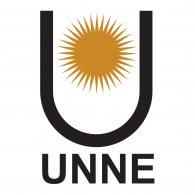Guillermo F. Quinteiro
RESEARCH INTERESTS
From a fundamental perspective as well as its technological possibilities, the application of quantum mechanics to solve the physics of the interaction of light and matter is one of the most interesting topics I find in physics. I focus primarily of the interaction of highly inhomogeneous beams of light with different states of matter.
CURRENT PROJECTS
Interaction of solids with optical vortices: Light carrying arbitrary orbital angular moment, or optical vortices, can be nowadays easily produced in the lab. The interaction with solids presents very interesting features that we are currently exploring in a variety of systems. For example, we have found that twisted light induces electric currents in bulk and quantum rings, and new optical transitions in quantum dots.
Interaction of molecules with inhomogeneous electro-magnetic fields: General strongly inhomogeneous fields can produce unexpected changes in the linear and non-linear optical properties of molecules. We are studying the changes in optical properties in small and medium size molecules that are relevant in biology and medicine.
Optical vortex optics: We investigate the properties of these new beams of light that present phase/polarization singularities. We have worked on the theoretical description, propose new fields and ways to generate and measure them in the lab.
FORMER PROJECTS
Nuclear reactor and medical physics: During the first years of my research career I worked in nuclear reactor and medical physics. The former was related to the study, by computational techniques, of the kinetic parameters associated with nuclear reactors. The latter, dealt with the optimization of a BNCT biological facility; this research involved both computational and experimental techniques.
Soft condensed matter: Using an optical experimental technique known as FRAP, I studied the transport properties of threalose molecular systems close to the glass transition temperature. The aim of the project was to understand the diffusion in this glassy matrix. Glassy matrix can be used to store medicine and food.
Solid state physics: My PhD research in condensed matter theory dealt with the optical control of spins in semiconductor structures - quantum dots, quantum wells, micro-cavities and bulk - as well as their applications to quantum information. Some of the topics I have addressed are: Solving non-perturbatively the indirect spin-spin interaction mediated by excitons, controlling the spin entanglement and errors in two-qubit operations, how cavity QED can modify the spin-spin coupling, as well as the Curie temperature of an array of such spins (DMS), and the new possibilities the use of polaritons open for quantum information.
TALKS
Twisted light - Minas Gerais, Brazil 2014
Twisted light - Muenster, Germany 2011
PRESS
International Day of Light, Buenos Aires 2018
